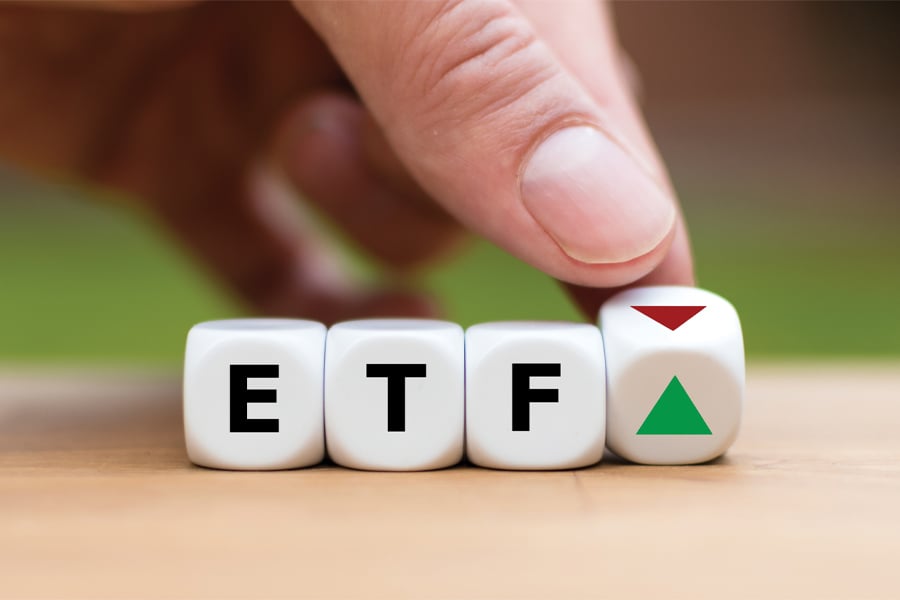

The growing anxiousness among clients during an unprecedented economic environment is creating a fresh opening for investments that offer downside protection.
Of course, the downside of that downside protection almost always means caps on performance.
Welcome to the world of buffered exchange-traded funds that offer a more liquid and more retail-oriented version of structured notes.
TrueMark Investments has emerged as the latest player in the buffered ETF space with a fund series that pairs downside protection with 80% of whatever the underlying benchmark gains.
The strategy is unique from most buffered products that typically set total upside performance caps in the single digits.
“In our view, the market for structured outcome ETFs will be growing exponentially in the coming years, with a variety of approaches available to investors,” said Michael Loukas, TrueMark chief executive.
TrueMark, a fledgling $30 million asset manager trying to find a toehold in the ETF space since it launched in March, is hoping the “uncapped” upside offering will strike gold with advisers looking for vehicles designed to reduce portfolio volatility.
“An uncapped structure can offer several advantages in certain market environments, including higher correlations over time to upside movements in the underlying index compared to capped strategies, and the ability to capture the outsized growth years,” Loukas said.
Despite what might seem like natural appeal, buffered ETFs, which are only offered by a handful of asset managers, are still niche products, mostly because of the complexity of the options trading required to engineer the buffers and the higher fees relative to other ETFs.
For example, the new TrueShares Structured Outcome ETFs, which buffer the performance of the S&P 500 Index, charge 79 basis points. By contrast, the SPDR S&P 500 ETF (SPY), which tracks the same index without buffers, charges 9 basis points.
“I’m not a fan, because performance has been poor and costs are higher,” said Dennis Nolte, vice president at Seacoast Investment Services.
“If I can't explain the process to a client in two or three sentences, I don't buy it,” he added. “The siren call of downside protection doesn't appeal to me because in my experience it doesn't pay.”
The complexity relates to a strategy that relies on options trading to provide the buffers. But the wrinkle that needs the most attention is the way these funds are designed for purchase on the day they are issued and held for an entire year.
Most buffered ETFs are issued monthly with buffers created in 12-month cycles.
That means any downside protection is set from the launch date. Thus, any performance from the launch price effectively pushes the downside protection lower.
The upside cap can also catch investors off guard because a fund that caps gains at 10% will become reduced by any performance established after the launch.
“You should buy them and hold them for the set period,” said Karan Sood, co-founder and chief executive of Cboe Vest, which subadvises the First Trust buffered ETFs.
“They’re really designed for risk-management practitioners as yet another tool in the toolbox,” he added. “Every time there’s a market crash or there’s more perception of risk in the markets these strategies have done well.”
Even financial advisers who are fans of buffered ETFs recommend treading lightly into the space and doing so with your eyes wide open because they are designed to be used for specific purposes over set time periods.
“For the right client, it makes a lot of sense to reduce downside risk in return for giving up some upside, but clients need to know what they are giving up in the form of potential long-term higher growth and dividends in return for more certainty in their portfolio returns,” said Michael Resnick, a former options trader and current senior wealth management adviser at GCG Financial.
“What it does is help smooth out portfolio volatility and helps your clients stay invested,” he added.
Kenneth Nuttall, director of financial planning at BlackDiamond Wealth Management, added some buffered ETF exposure to client portfolios at the end of February when the stock market was in the middle of a 30% decline.
The buffers, which were only used in portions of portfolios, limited losses to 10% where they were applied, but the upside caps also impeded those portfolios from fully participating in the rally that followed.
“We should have put on a different note as the market recovered,” Nuttall said. “Sometimes you win more by not losing.”

Relationships are key to our business but advisors are often slow to engage in specific activities designed to foster them.

Whichever path you go down, act now while you're still in control.

Pro-bitcoin professionals, however, say the cryptocurrency has ushered in change.

“LPL has evolved significantly over the last decade and still wants to scale up,” says one industry executive.

Survey findings from the Nationwide Retirement Institute offers pearls of planning wisdom from 60- to 65-year-olds, as well as insights into concerns.
Streamline your outreach with Aidentified's AI-driven solutions
This season’s market volatility: Positioning for rate relief, income growth and the AI rebound
